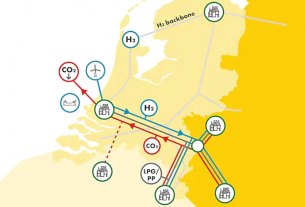Europe – Unlocking European Energy Security is a white paper published by Siemens Gamesa that outlines the energy supply challenges that Europe has faced since the invasion of Ukraine, as well as the actions required to restore stability and energy security while addressing the climate emergency and achieving decarbonization.
The importance and urgency of nations protecting and ensuring their energy supply increased dramatically in just three months in 2022. Energy security has risen to the top of European governments’ concerns as a result of geopolitical events, both in terms of ensuring independent supply and ensuring predictable prices for consumers.
Renewable energy and green hydrogen will be critical in the years leading up to the EU’s 2050 climate neutrality deadline. Large-scale decarbonization is possible while delivering energy security with clean, affordable, and domestically produced clean energy and fuels. Nations can meet the targets required to achieve net zero by converting hard-to-abate industries to this green fuel.
Meeting demand
The importance of tackling both issues of energy security and decarbonization together is highlighted by Siemens Gamesa global CEO Jochen Eickholt, “The current crisis should not be allowed to push the climate emergency down the agenda. It is imperative that the entire renewable energy ecosystem is aligned on the need to reduce the demand for fossil fuels. For green hydrogen to reach scale and, thus, competitiveness, it too needs a seismic shift in the scale and speed of renewables roll-out.”
The key is held by five levers:
- Increase the amount of renewable energy produced in Europe; this will require expediting the permitting process.
- Establish green hydrogen transportation and distribution infrastructure, whether domestically produced or imported, as well as a stable hydrogen trading market.
- Develop innovative storage solutions to ensure supply continuity and predictability, and pass legislation that allows for sector coupling to balance electricity demand and green hydrogen production.
- Implement legislative and regulatory tools to create a market for EU-produced green hydrogen that can be cost-comparable to fossil-fuel-based imports.
- Industrialize the electrolyzer production scale required to meet demand in Europe.




